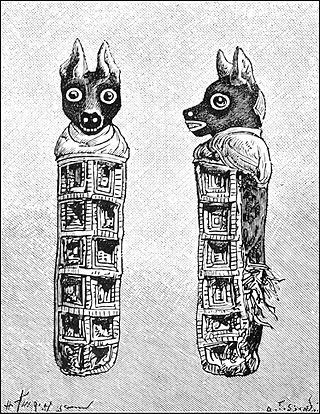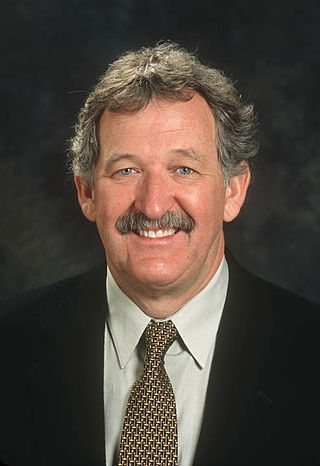
Zooarchaeology merges the disciplines of zoology and archaeology, focusing on the analysis of animal remains within archaeological sites. This field, managed by specialists known as zooarchaeologists or faunal analysts, examines remnants such as bones, shells, hair, chitin, scales, hides, and proteins, such as DNA, to derive insights into historical human-animal interactions and environmental conditions. While bones and shells tend to be relatively more preserved in archaeological contexts, the survival of faunal remains is generally infrequent. The degradation or fragmentation of faunal remains presents challenges in the accurate analysis and interpretation of data.

Environmental archaeology is a sub-field of archaeology which emerged in 1970s and is the science of reconstructing the relationships between past societies and the environments they lived in. The field represents an archaeological-palaeoecological approach to studying the palaeoenvironment through the methods of human palaeoecology and other geosciences. Reconstructing past environments and past peoples' relationships and interactions with the landscapes they inhabited provide archaeologists with insights into the origins and evolution of anthropogenic environments and human systems. This includes subjects such as including prehistoric lifestyle adaptations to change and economic practices.
Roald Hilding Fryxell was an American educator, geologist and archaeologist. He was a Professor of Anthropology at Washington State University (WSU) and pioneer in the interdisciplinary field of geoarchaeology, with a career that involved work on monumental projects in North America and even outer space.
Andrew Sherratt's model of a secondary products revolution involved a widespread and broadly contemporaneous set of innovations in Old World farming. The use of domestic animals for primary carcass products (meat) was broadened from the 4th–3rd millennia BCE to include exploitation for renewable 'secondary' products: milk, wool, traction, riding and pack transport.
Stine Rossel was a Danish archaeologist. She was a postdoc and Instructor of Egyptology at the University of Copenhagen. Her interests included zooarchaeology, the effects of environmental change on animal use, and the rise of complex societies.
Lee Ann Newsom is an Associate Professor of Anthropology at the Pennsylvania State University at University Park. She has written numerous books and articles. She was awarded a MacArthur Fellowship in 2002.
Deborah M. Pearsall is an American archaeologist who specializes in paleoethnobotany. She maintains an online phytolith database. She is a full professor in the Department of Anthropology at the University of Missouri in Columbia, Missouri, where she first began working in 1978. She received her Ph.D. in anthropology from the University of Illinois at Urbana-Champaign in 1979, with a dissertation titled The Application of Ethnobotanical Techniques to the Problem of Subsistence in the Ecuadorian Formative.
The Georgia Museum of Natural History is the U.S. state of Georgia's museum of natural history located in Athens, Georgia. The museum has eleven different collections in Anthropology, Arthropods, Botany, Geology, Herpetology, Ichthyology, Invertebrate, Mammalogy, Mycology, Ornithology, and Zooarchaeology. In addition, there are exhibitions, archives, and entertainment for children. The Exhibit Gallery is free and open to the public during scheduled hours. People can schedule a tour to visit the collections by appointment.

Nicholas Honerkamp is an American archaeologist whose principal fields of interest are historical archaeology, plantation archaeology, industrial archaeology and archaeological method and theory. Honerkamp is a professor of anthropology in the Department of Sociology, Anthropology and Geography at the University of Tennessee at Chattanooga. He is also the director of the Jeffrey L. Brown Institute of Archaeology at the University of Tennessee at Chattanooga.
John W. Olsen is an American archaeologist and paleoanthropologist specializing in the early Stone Age prehistory and Pleistocene paleoecology of eastern Eurasia. Olsen is Regents' Professor Emeritus of Anthropology and Executive Director of the Je Tsongkhapa Endowment for Central and Inner Asian Archaeology at the University of Arizona in Tucson, Arizona, USA. He is also a Leading Scientific Researcher at the Institute of Archaeology and Ethnography of the Russian Academy of Sciences' Siberian Branch in Novosibirsk and Guest Research Fellow at the Chinese Academy of Sciences' Institute of Vertebrate Paleontology and Paleoanthropology (IVPP) in Beijing where he is also Co-Director of the Zhoukoudian International Paleoanthropological Research Center. Olsen has been named a Distinguished Researcher of the Nihewan Research Center in Hebei Province, China. He is also a Foreign Expert affiliated with The Yak Museum in Lhasa, Tibet.

Stanley John Olsen was an American vertebrate paleontologist and one of the founding figures of zooarchaeology in the United States. Olsen was also recognized as an historical archaeologist and scholar of United States military insignia, especially buttons of the American Colonial through Civil War periods. He was the father of John W. Olsen.
Lynne Billard is an Australian statistician and professor at the University of Georgia, known for her statistics research, leadership, and advocacy for women in science. She has served as president of the American Statistical Association, and the International Biometric Society, one of a handful of people to have led both organizations.

Bruce D. Smith is an American archaeologist and curator at the Smithsonian Institution's National Museum of Natural History who primarily focuses on the interaction of humans with their environment, especially the origins of agriculture in eastern North America agricultural complex.
Theresa A. Singleton is an American archaeologist and writer who focuses on the archaeology of African Americans, the African diaspora, and slavery in the United States. She is a leading archaeologist applying comparative approaches to the study of slavery in the Americas. Singleton has been involved in the excavation of slave residences in the southern United States and in the Caribbean. She is a professor of anthropology at Syracuse University, and serves as a curator for the National Museum of Natural History.
Clark Spencer Larsen is an American biological anthropologist, author, and educator. His work focuses on bioarchaeology, the study of human remains from archaeological settings. Although his interests span the entire record of human evolution, his research largely pertains to the last 10,000 years, a period of dynamic change in health, well-being, and lifestyle, much of which relates to population increase, overcrowding, and nutritional decline that co-occurred with the transition from hunting and gathering to agriculture, creating living conditions that humans are grappling with to the present day.
Melinda A. Zeder is an American archaeologist and Curator Emeritus in the Department of Anthropology of the National Museum of Natural History, Smithsonian Institution. Her zooarchaeological research has revolutionized understandings of animal domestication.
Elsa Marion Redmond is an American archaeologist at the American Museum of Natural History. She specializes in Latin American archaeology. She is an elected member of the National Academy of Sciences and the American Academy of Arts and Sciences.
Margaret J. Schoeninger is an American anthropologist. She is Professor Emerita of Anthropology at The University of California San Diego, and until recently she was a Co-Director for the Center for Academic Research and Training in Anthropology, or CARTA. Her research is primarily focused on the evolution of the human diet and what this information can tell us about other aspects of human evolution.
Umberto Albarella is an Italian-British archaeologist, prehistorian, and activist. He is professor of Zooarchaeology at the Department of Archaeology, University of Sheffield. Albarella's previous work has been based in Britain, Italy, Armenia, Greece, the Netherlands, Germany, Switzerland, France, and Portugal.
Bennie Carlton Keel is an American archaeologist who has made contributions to the foundational understanding of Cherokee archaeology and culture, North Carolina archaeology, and to the development of Americanist cultural resource management (CRM).





